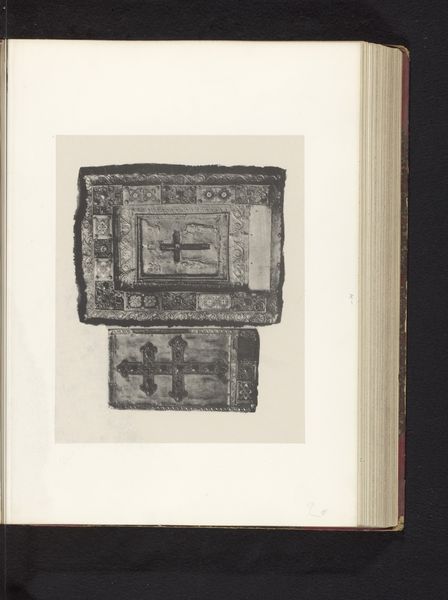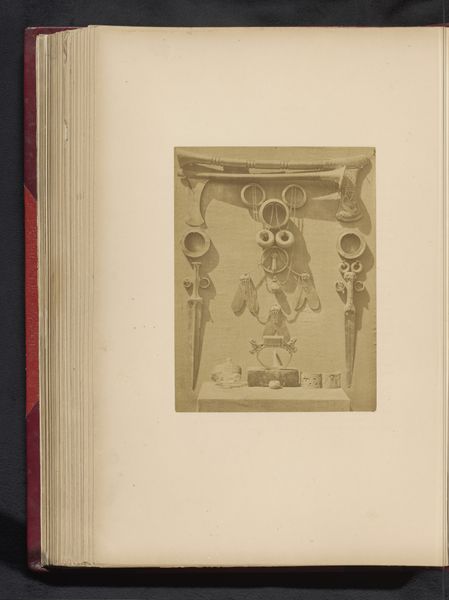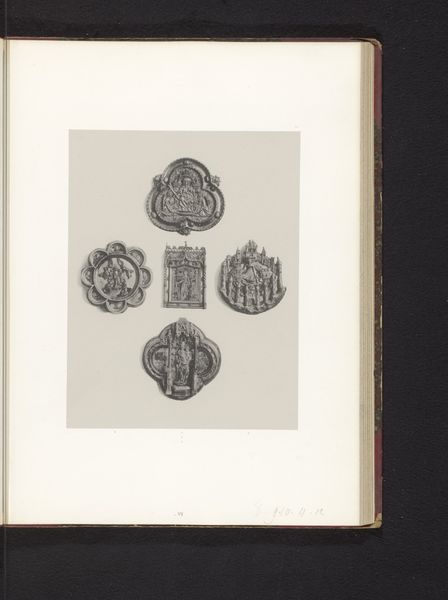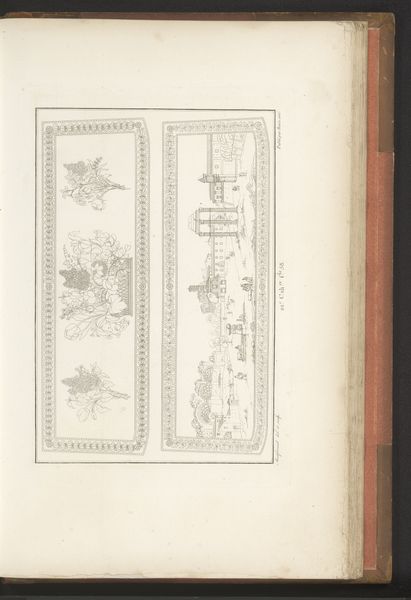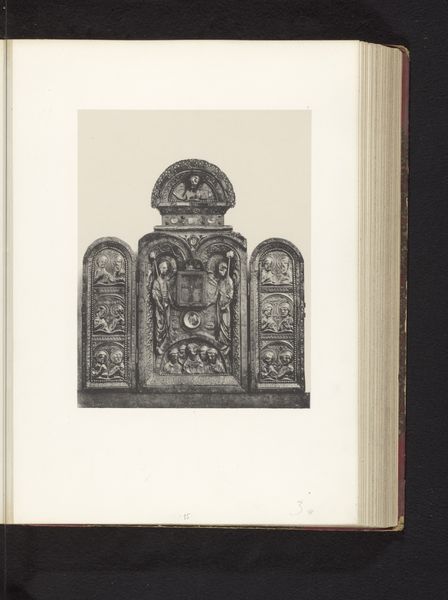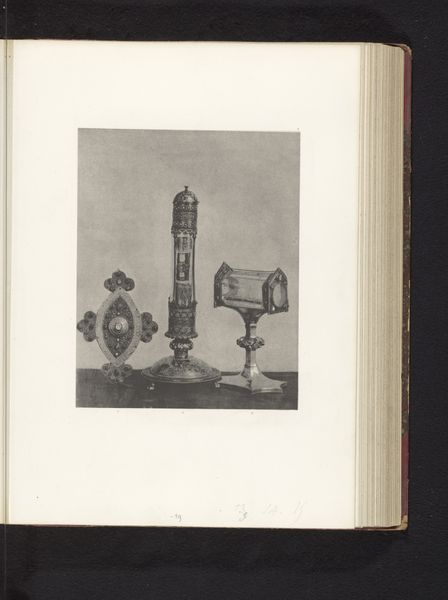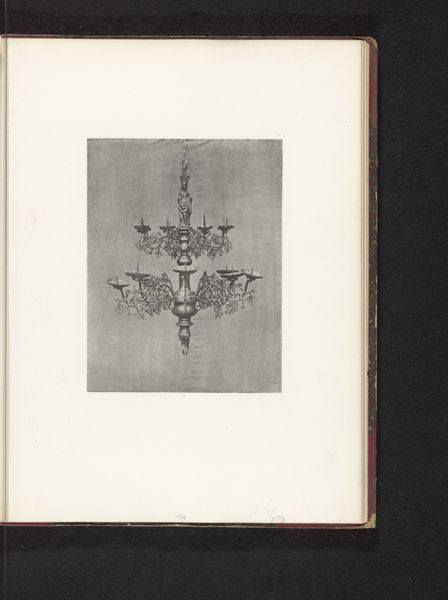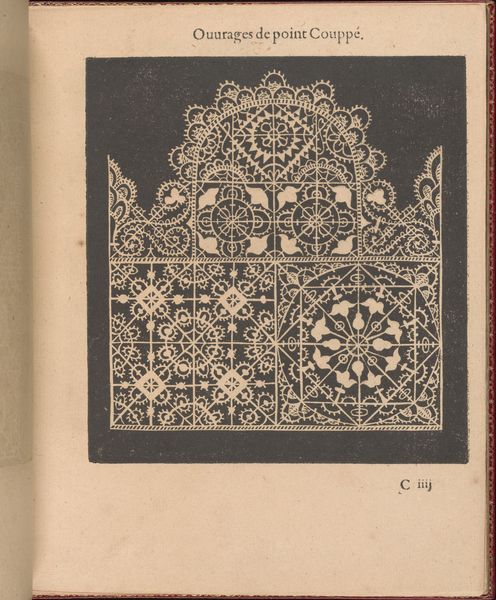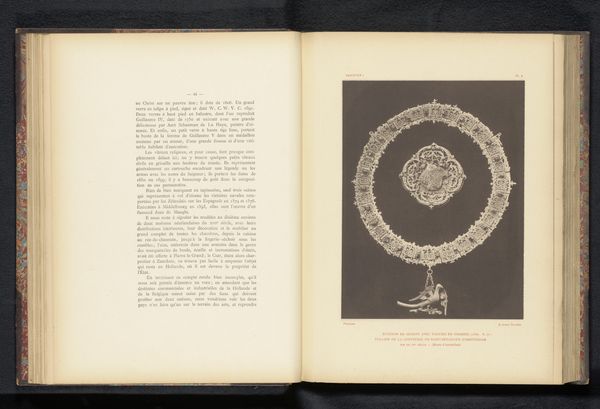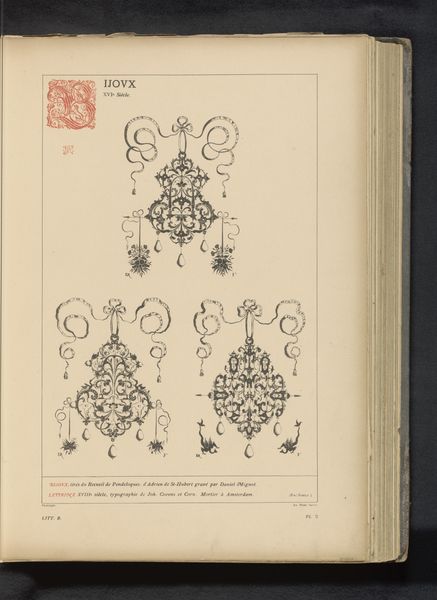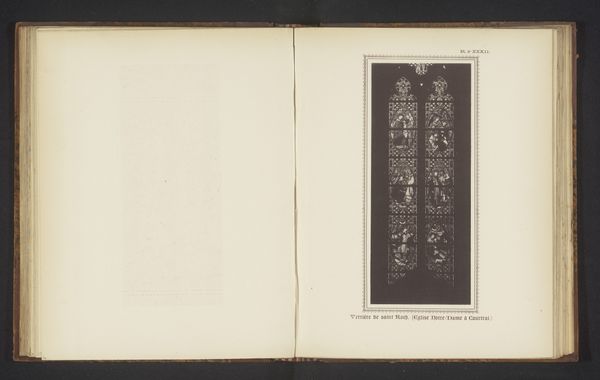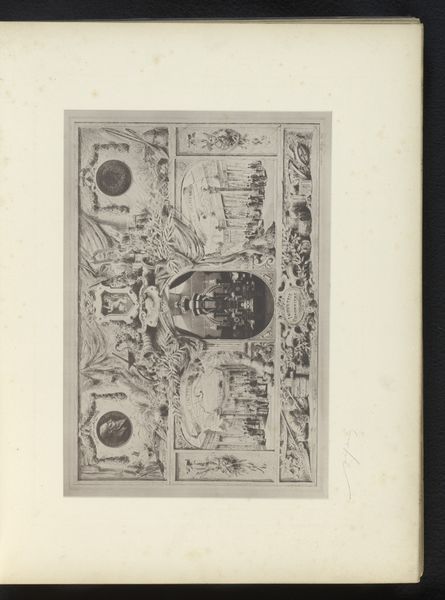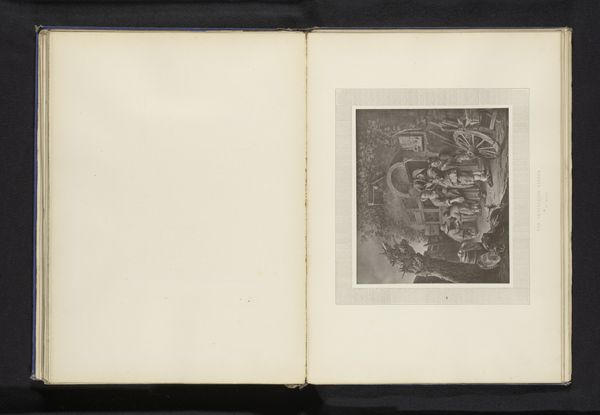
Banderol van koper uit de collectie van de Soeurs de Notre-Dame de Namur, opgesteld op een tentoonstelling over religieuze objecten uit de middeleeuwen en renaissance in 1864 in Mechelen before 1866
0:00
0:00
print, metal, engraving
#
medieval
# print
#
metal
#
history-painting
#
decorative-art
#
engraving
Dimensions: height 240 mm, width 202 mm
Copyright: Rijks Museum: Open Domain
Editor: So, here we have an engraving of a copper "banderol" – like a pendant or banner – from before 1866, documented by Joseph Maes. It was part of a religious objects exhibition in Mechelen in 1864. It looks quite ornate. What significance might this object have held? Curator: Think about what repeated imagery and materials tell us. Copper, though relatively base, gained a reddish-gold tone when polished – a sign of status and connection with celestial power. This artifact presents cultural memory, embodying not just faith but the socioeconomic forces that shaped its creation. What iconographic program do you discern? Editor: I see a figure in the center panel, possibly a saint? And surrounding that, a lot of decorative work and what looks like embedded gemstones. Curator: The gemstones, likely glass imitations, echo the heavenly Jerusalem described in Revelation – brilliance and purity. The saint is central, acting as an intercessor. This repetition aims to reinforce that association, embedding these symbols deeply in the viewer's psyche. But there's tension, isn’t there? The precious juxtaposed with the imitation. What does that evoke for you? Editor: Perhaps the accessibility of faith, even through imitation. It makes me wonder, what did the intended audience really understand of all this symbolism? Curator: A powerful point! It wasn't necessarily about explicit understanding, but rather about creating an immersive symbolic environment. Like music or incense, the symbols affected people emotionally and subconsciously, reinforcing a sense of shared history and continuity. What strikes you most about the object's presence within the exhibit's documentation? Editor: That even reproductions of religious objects held value worthy of documentation. It shows how important these relics were for connecting people to their faith and heritage. Curator: Exactly. An object's value exists in both its creation and its interpretation. Recognizing this dialogue through time helps us access a more full understanding of both ourselves and others.
Comments
No comments
Be the first to comment and join the conversation on the ultimate creative platform.
